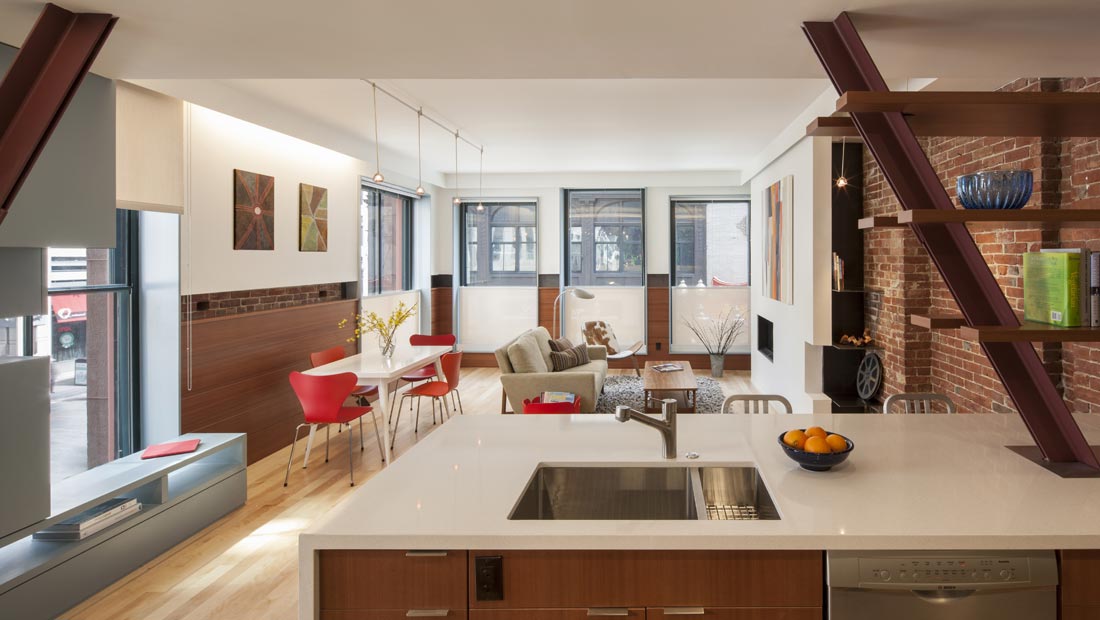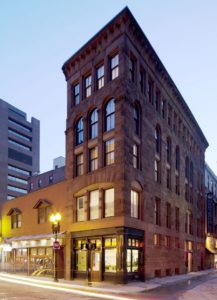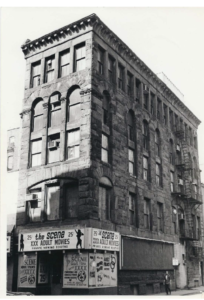
31 Oct HBI offers the Historic Hayden Building for sale
After nearly 30 years as owner of the historic Hayden Building, Historic Boston Inc. is accepting bids for purchase of the Chinatown landmark.
Hunneman Commercial Real Estate has been commissioned as broker for the building, which consists of four market rate 2-bedroom apartments and one ground floor retail space. Completely rehabilitated by Historic Boston in 2014, the property is now a high quality mixed-use property that is also centrally located to transportation and nearby employment centers.
To learn more about the opportunity, click here for the property profile.

Designed by the eminent Boston architect Henry Hobson Richardson, known locally for Trinity Church in Copley Square, and man landmark buildings throughout the United States, the Hayden Building is unusual for its small size, its use as a commercial structure, and because it’s still standing.
It is also a quintessential example of Historic Boston’s work. Purchased in 1993 when the Hayden Building was structurally compromised and neglected by years of poor maintenance and building fires, the Hayden Building, along with the small building next to it that now houses Penang restaurant, was purchased by HBI at a fire sale. HBI restored both structures, recruiting Penang to the smaller structure, and activated the first floor of the Hayden Building.

The Hayden Building in 1993
While it’s hard to recall, this edge of Chinatown and Downtown Boston in 1993 was still Boston’s “Combat Zone” – its red light district – and the market for new offices or residences was not strong enough to support the full rehabilitation of the Hayden Building. In its hey day, more than 30 strip clubs, adult film theaters, peep shows and adult bookstores lined Washington Street north of Stuart and Kneeland streets. But by 1993, the City was driving change in the neighborhood to dismantle the adult entertainment uses and new zoning to promote development.
The Hayden Building, located at 681 Washington St., was built in 1875. It wasn’t known as a Richardson-designed building until 1975 when a small sketch for the drawing of it was found in the files of Richardson’ successor firm, Shepley Bulfinch. Richardson, it turns out, had designed the little building for the estate of his father in law, and so its commission hadn’t been undertaken the like the work of other clients. It has since come to be understood as a precursor design to the famous Marshall Fields Warehouse in Chicago, and is now a protected Boston Landmark and is listed on the National Register of Historic Places.
HBI’s intervention in 1993 helped turn around the seedy Lower Washington district in the ‘90s and ‘00s. In 2009, Historic Boston sold the small, non-historic building next door, housing Penang restaurant, and investing in the Hayden Building, turning the upper floors into four small market-rate apartments. Total development costs on the 8,580-square-foot building were almost $6 million, and it was completed in 2014 with a LEED Platinum sustainability level.
Now fully occupied, Historic Boston welcomed Wig World Boston to the space as the company expands from its former location on Temple Place. HBI has placed an historic preservation restriction on the property that will ensure that future owners maintain the historic qualities of the 19th century buildings while allowing it to be adapt for contemporary uses.



